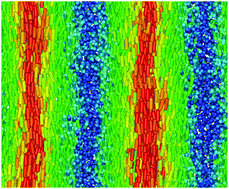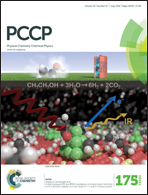Thermomechanical coupling in coarse grained cholesteric liquid crystal model systems with pitches of realistic length
Abstract
Thermomechanical coupling in cholesteric liquid crystals, i.e. when a temperature gradient parallel to the cholesteric axis rotates the director, has been studied in a model system of soft ellipsoids where the interaction potential has been augmented by a chiral potential. More specifically, the cross coupling coefficient between the temperature gradient and the director angular velocity, or Leslie coefficient, has been obtained as a function of the pitch by evaluating the corresponding Green–Kubo relation by molecular dynamics simulation. The product of the Leslie coefficient and the pitch has been found to be constant within the statistical uncertainty. This is in accordance with a symmetry condition originally proposed by de Gennes and it means that the Leslie coefficient of systems with longer pitches can be obtained from systems with shorter pitches. Since the pitches of realistic systems are usually very long, it becomes possible to study thermomechanical coupling in these systems which otherwise would have required prohibitively long simulations. Since we also have obtained rather accurate data on the cross correlation function between the director angular velocity and the heat current density, it becomes possible to analyse the mechanism of thermomechanical coupling to some extent.



 Please wait while we load your content...
Please wait while we load your content...